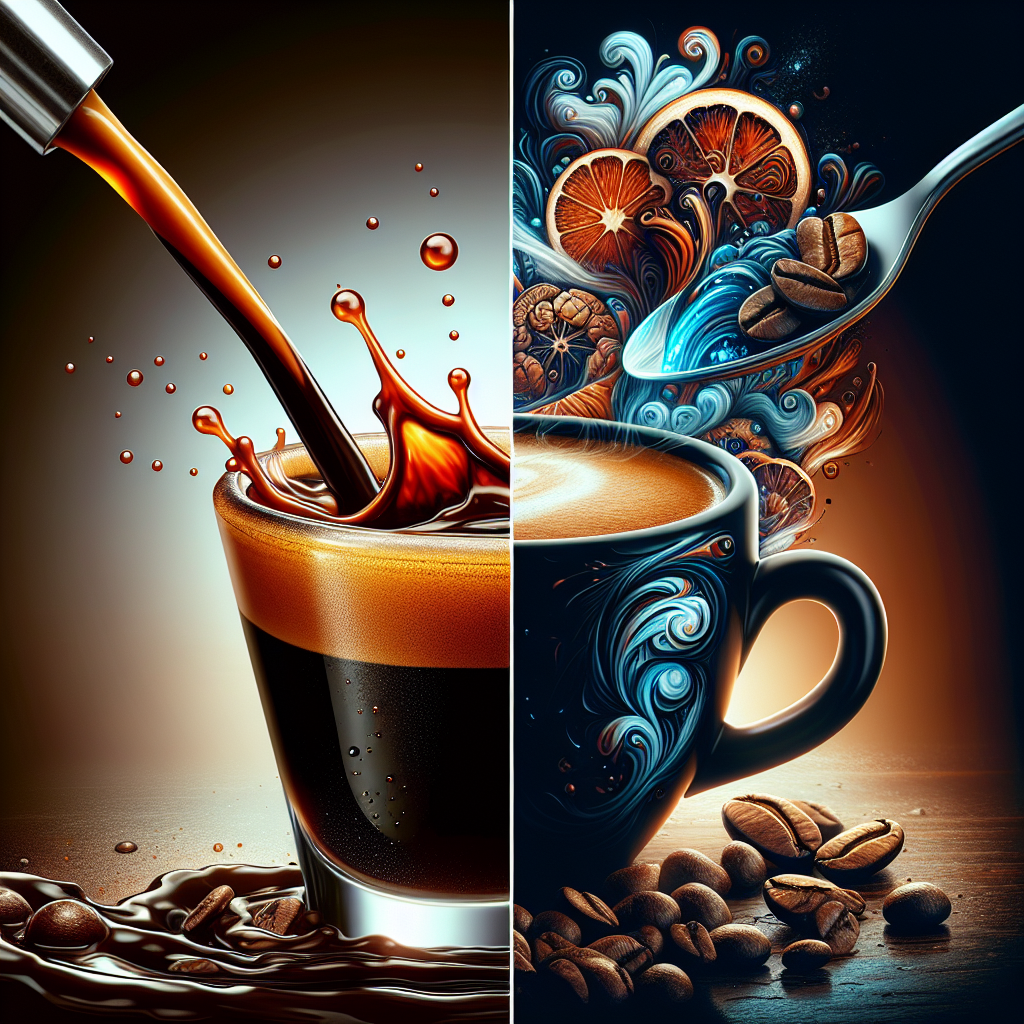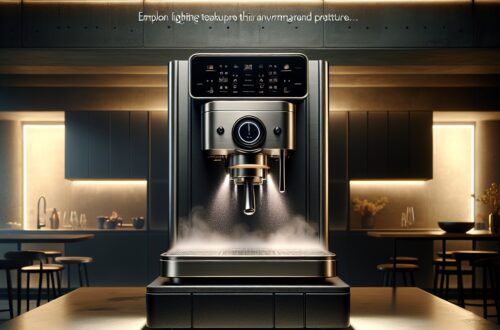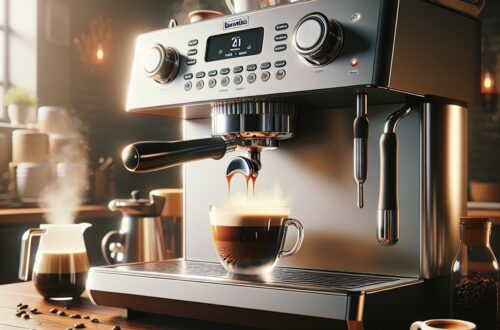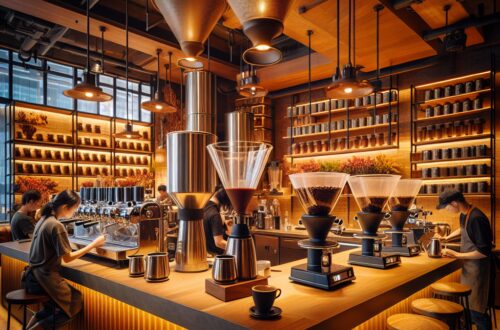Is There More Caffeine in an Espresso Shot Than in a Cup of Coffee?
Understanding Caffeine Content: Espresso vs. Coffee
Caffeine is a natural stimulant most commonly found in tea, coffee, and cacao plants. It works by stimulating the brain and central nervous system, helping you stay alert and preventing the onset of tiredness. Coffee, one of the most popular sources of caffeine, is consumed worldwide in various forms, including espresso and brewed coffee.
The caffeine content in coffee can vary significantly depending on the type of coffee bean, brewing method, and serving size. Caffeine content is typically measured in milligrams (mg). For instance, an ounce (oz) of espresso generally contains about 63 mg of caffeine, while the same amount of brewed coffee has around 10 mg of caffeine. Therefore, an 8oz cup of brewed coffee contains about 96 mg of caffeine on average, while a one-ounce shot of espresso contains approximately 64 mg.
Comparing the Per-Ounce Caffeine Content
When comparing caffeine content per ounce, it’s clear that espresso is more concentrated. Brewing methods play a significant role in caffeine extraction. Espresso is made by forcing a small amount of nearly boiling water through finely-ground coffee beans, resulting in a quick caffeine extraction process. On the other hand, drip coffee relies on gravity and takes longer, which affects the caffeine content.
Comparing the Per-Ounce Caffeine Content
| Beverage | Caffeine per 1oz | Caffeine per serving |
|---|---|---|
| Espresso | 63mg | Average 64mg in a 1oz shot |
| Brewed Coffee | Around 10mg | About 96mg in an 8oz cup |
Studies show that a standard 2oz shot of espresso contains around 80 mg of caffeine, which is similar to the caffeine content found in a 12oz cup of drip coffee. This demonstrates that while espresso has a higher caffeine content per ounce, the total caffeine content in brewed coffee can be higher due to larger serving sizes.
Total Caffeine in a Serving: Cup of Coffee vs. Espresso Shot
Serving size plays a crucial role in determining the total caffeine intake. A single ounce of espresso contains around 64 mg of caffeine, while an average 8oz cup of brewed coffee contains roughly 96 mg of caffeine. Therefore, a larger serving size of brewed coffee generally results in a higher total caffeine intake.
For example, if you’re drinking a 12oz cup of brewed coffee, you could be consuming about 144 mg of caffeine. In contrast, a double shot (2oz) of espresso contains about 128 mg of caffeine. While the difference might seem minor, it’s clear that the total caffeine content varies significantly based on the serving size and type of coffee consumed.
In another scenario, a 300ml pour-over coffee might have more total caffeine than a 40ml espresso shot due to the water-to-coffee ratio. Hence, it’s important to consider the total volume when comparing caffeine content across different coffee types.
Factors Affecting Caffeine Content
Several factors can influence caffeine content, including the type of coffee bean, brewing method, grind size, water-to-coffee ratio, and brewing time. Arabica beans usually have less caffeine than Robusta beans. Additionally, the shorter brewing time of espresso results in a quick but less extensive extraction of caffeine compared to methods like drip coffee or French press, which have longer steeping times.
The temperature also impacts caffeine extraction. Higher temperatures can lead to more efficient caffeine extraction. Similarly, a finer grind size used in espresso results in a higher caffeine content per ounce, whereas a coarser grind used in drip coffee releases caffeine more slowly.
Brewing methods are another critical factor. Espresso, due to its shorter contact time with water, extracts caffeine quickly. In contrast, brewing methods such as drip coffee or French press, which have longer contact times, tend to extract more caffeine. Freshness and roast level of coffee beans also play a part, with darker roasts generally having slightly less caffeine than lighter roasts due to the roasting process.
Understanding the Practical Implications
Individuals’ caffeine sensitivity varies, which influences their choice between espresso and brewed coffee. Some may choose espresso for its quick, concentrated caffeine hit, while others may prefer the larger volume and slower release of brewed coffee. Those looking to manage their caffeine intake should monitor the total volume and frequency of their coffee consumption.
Health guidelines recommend moderate caffeine consumption, generally considered to be up to 400 mg per day for most adults. This equates to about four 8oz cups of brewed coffee or five one-ounce shots of espresso. Being aware of these guidelines can help consumers make informed choices based on their personal caffeine tolerance and preferences.
Common Questions and Misconceptions
There are several myths associated with caffeine content. One common misconception is that darker roasts contain more caffeine. In reality, lighter roasts tend to retain more caffeine. Another myth is that espresso always has more caffeine than brewed coffee. While espresso is more concentrated per ounce, the total serving size of brewed coffee often results in a higher overall caffeine intake.
It’s also worth noting that decaf coffee is not entirely caffeine-free. It contains trace amounts of caffeine, usually around 2-5 mg per cup, which can still add up if consumed in large quantities. Additionally, the notion that “strong coffee” always means more caffeine is misleading. The strength of the flavor does not necessarily correlate with higher caffeine content.
Understanding these myths can help consumers make better dietary decisions regarding their caffeine intake. For more in-depth information and answers to your coffee-related questions, visit our FAQ section (click here).
Explore More Coffee Insights
Coffee lovers, whether fond of espresso or brewed coffee, will find this comparison enlightening. Understanding the caffeine content differences and factors influencing these numbers can help tailor your coffee consumption to your preferences and health goals. For those curious about more coffee facts, recipes, and insights into different brewing methods, check out our other blog posts.
Shop at Breville now!
https://breville.oie8.net/oqDqrE
Shop Coffee Machine at Amazon now!
Click here!





